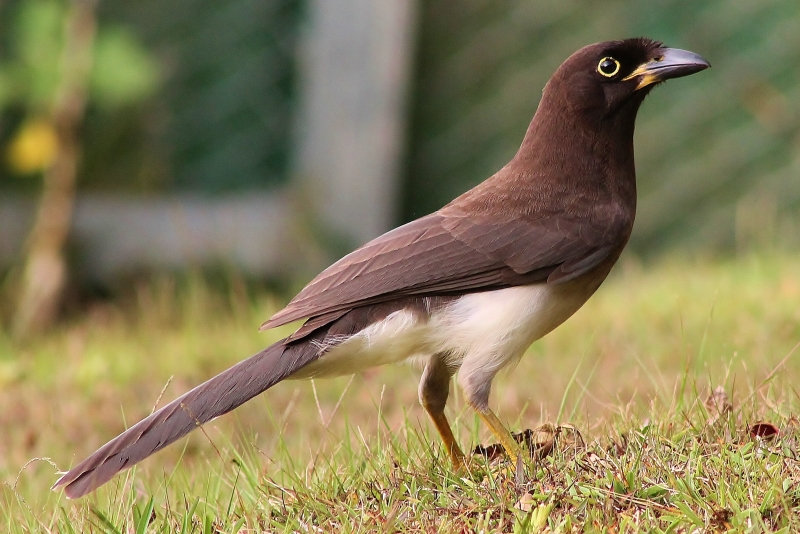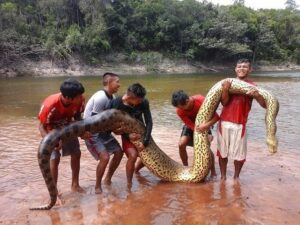Nestled amidst the vibrant tapestry of Belize’s lush forests, the Brown Jay (Psilorhinus morio) stands out with its striking blend of brown, black, and white plumage. This charismatic bird, often found in small flocks, adds a touch of elegance and curiosity to its forested habitat. Beyond its captivating appearance, the Brown Jay plays an essential role in the ecosystem, making it a focal point of interest for bird enthusiasts and conservationists alike. In this article, we delve into the world of Belize’s Brown Jay, exploring its unique characteristics, habitat, behavior, and the challenges it faces in its natural environment.
A Closer Look at Belize’s Brown Jay
The Brown Jay, with its enchanting plumage and captivating demeanor, serves as a delightful subject for bird enthusiasts and researchers eager to unravel its mysteries. This charismatic avian species is known for its distinctive appearance, featuring shades of brown, black, and white that create a striking contrast against the verdant backdrop of Belize’s forests.
One of the most remarkable aspects of the Brown Jay’s plumage is its versatility. The shades of brown vary from deep chocolate to warm russet, blending seamlessly with patches of velvety black on its wings and tail. Accented by crisp white markings on its face and underparts, the Brown Jay presents a harmonious palette that captures the eye and draws admiration from observers.
Beyond its visual appeal, the Brown Jay possesses a range of intriguing behaviors that contribute to its charm. These birds are highly social, often forming small, cohesive flocks that move through the forest with coordinated grace. Their communication is complex, involving a repertoire of calls and vocalizations that convey information about food sources, potential threats, and social interactions within the group.
Nest building is another fascinating aspect of the Brown Jay’s life. These birds construct intricate nests using a combination of twigs, leaves, and other natural materials, showcasing their ingenuity and adaptability in creating safe havens for raising their young. Observing their nesting behavior provides valuable insights into their reproductive strategies and family dynamics.
Moreover, the Brown Jay’s foraging habits reveal its role as an important player in Belize’s ecosystem. With a diverse diet that includes fruits, insects, small vertebrates, and even the occasional scavenged items, these birds contribute to seed dispersal, pest control, and nutrient recycling within their habitat.
In summary, delving into the world of Belize’s Brown Jay offers a glimpse into a fascinating creature whose beauty, behavior, and ecological significance enrich the rich tapestry of Belize’s natural heritage.
Habitat and Behavior of the Brown Jay
The habitat preferences of the Brown Jay are closely intertwined with Belize’s diverse ecosystems, where it thrives in a variety of forested environments. These birds are commonly found in tropical and subtropical forests, including lowland rainforests, montane forests, and even secondary growth habitats. Their adaptability to different forest types reflects their versatility in exploiting available resources and adapting to changing environmental conditions.
Within these habitats, Brown Jays exhibit a range of behaviors that highlight their social structure and ecological role. One notable aspect of their behavior is their social organization within flocks. Brown Jays form cohesive groups that engage in cooperative activities such as foraging, predator defense, and communication. This social cohesion enhances their survival and reproductive success by leveraging collective knowledge and resources within the group.
Foraging behavior is a key aspect of the Brown Jay’s daily routine. These omnivorous birds employ a diverse array of feeding strategies, from probing for insects and small invertebrates in leaf litter to plucking fruits and seeds from trees and shrubs. Their opportunistic feeding habits allow them to exploit seasonal abundance and nutritional diversity, contributing to their resilience in fluctuating food availability.
During the breeding season, Brown Jays exhibit fascinating nesting behavior. Mated pairs collaborate in nest construction, with both male and female contributing to the intricate structure using twigs, leaves, and fibers. The nest is typically placed in a concealed location within dense vegetation, providing protection from predators and environmental disturbances. Parental care is shared, with both adults participating in incubating eggs and feeding the fledglings until they are independent.
Understanding the habitat preferences and behavior of Brown Jays is essential for their conservation and management. By studying their ecological requirements and interactions within forest ecosystems, conservationists can develop strategies to protect key habitats, mitigate threats, and promote sustainable coexistence between these charismatic birds and human activities.
Conservation Challenges and Efforts for Brown Jays in Belize
While the Brown Jay graces Belize’s forests with its beauty and contributes to ecological balance, it faces a range of conservation challenges that threaten its population and habitat. One of the primary concerns is habitat loss and fragmentation due to deforestation, agricultural expansion, and urban development. These activities diminish the availability of suitable nesting sites, foraging areas, and roosting habitats for Brown Jays, leading to population declines and increased vulnerability to environmental pressures.
Another significant threat to Brown Jays in Belize is the impact of climate change. Shifts in temperature, rainfall patterns, and habitat suitability can disrupt breeding cycles, alter food availability, and expose these birds to new risks such as extreme weather events. As climate-related challenges escalate, Brown Jays must adapt to changing conditions or face heightened survival challenges.
Human-wildlife conflict is also a conservation issue for Brown Jays. Encounters with humans in urban and peri-urban areas can result in conflicts over food sources, nest disturbance, and exposure to pollutants or hazards. Mitigating these conflicts requires community engagement, education, and proactive measures to reduce negative interactions and promote coexistence between people and wildlife.
Conservation efforts for Brown Jays in Belize are multifaceted and collaborative. Protected areas and wildlife reserves play a crucial role in safeguarding essential habitats for these birds, providing refuge and breeding sanctuaries free from direct human disturbances. Habitat restoration initiatives aim to rehabilitate degraded landscapes and create corridors that enhance connectivity between fragmented habitats, facilitating movement and genetic exchange among Brown Jay populations.
Community-based conservation programs involve local stakeholders in conservation planning, awareness-raising, and sustainable resource management. By fostering stewardship and ecological literacy, these initiatives empower communities to actively participate in preserving biodiversity and supporting the long-term survival of species like the Brown Jay.
Through integrated approaches that address habitat protection, climate resilience, human-wildlife coexistence, and community engagement, Belize can secure a brighter future for its charismatic Brown Jays and uphold its commitment to biodiversity conservation.
Final Thoughts: Preserving the Legacy of Belize’s Brown Jays
The Brown Jay embodies the spirit of Belize’s rich biodiversity, captivating hearts with its beauty and enchanting behavior. As we reflect on the intricacies of its plumage, the dynamics of its social groups, and the challenges it faces in a changing world, we are reminded of the interconnectedness of all life forms within ecosystems.
Conservation efforts for the Brown Jay must be holistic, addressing not only immediate threats like habitat loss and climate change but also fostering harmony between humans and wildlife. By valuing the natural heritage that Brown Jays represent, we commit to safeguarding not just a species but the intricate web of life that sustains us all. As Belize continues to prioritize conservation initiatives and engage communities in stewardship, we pave the way for a future where Brown Jays soar through forests unimpeded, their calls echoing as reminders of resilience and coexistence. Together, we hold the key to preserving the legacy of Belize’s Brown Jays for generations to come.




